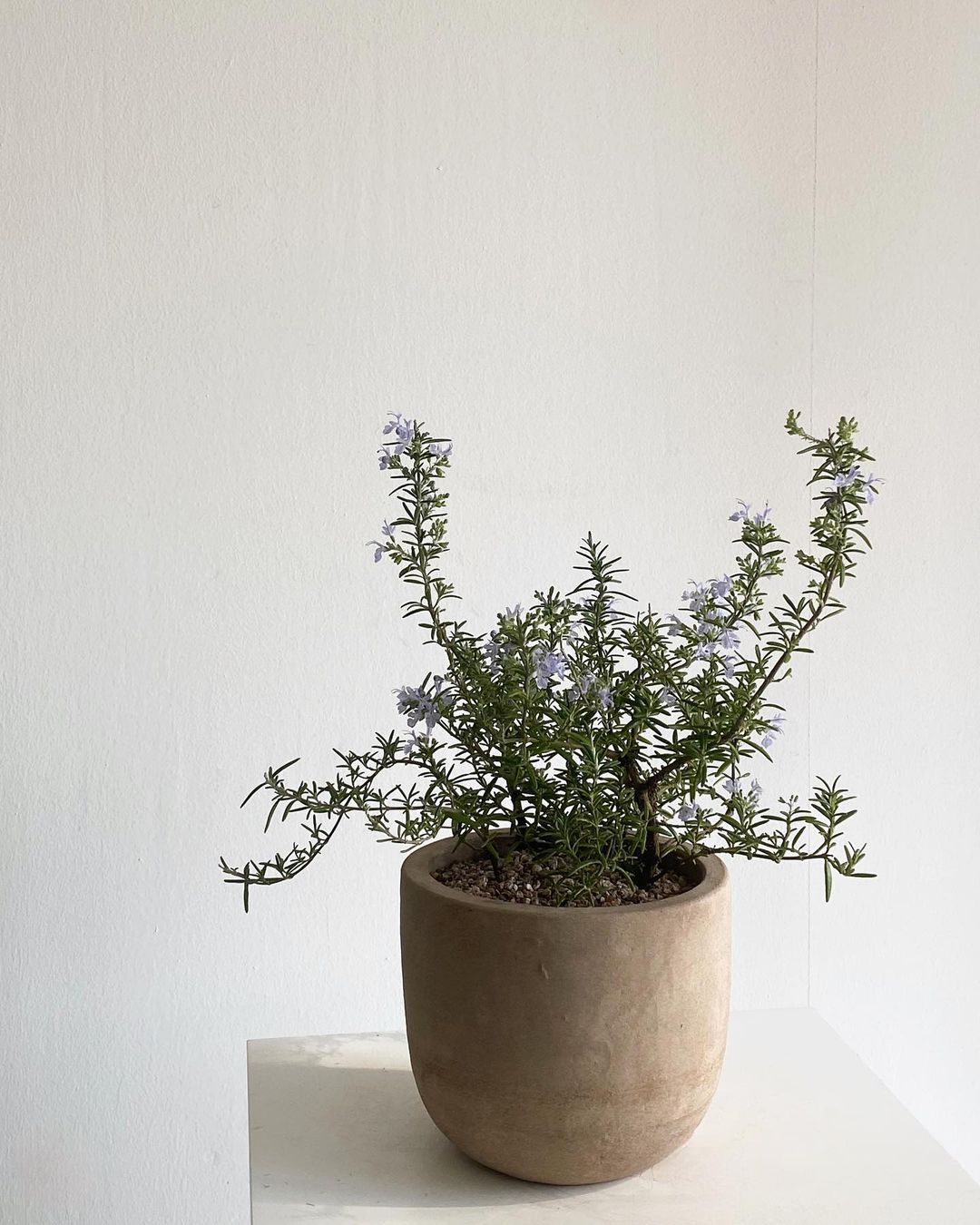Learn how to grow and care for Creeping Rosemary, a versatile herb perfect for ground cover or container gardening. Discover tips on planting, maintenance and using this aromatic plant in your garden.
Creeping Rosemary, also known as prostrate rosemary, is a low-growing variety of the popular herb that offers both beauty and functionality in the garden. With its aromatic leaves and delicate flowers, this versatile plant can serve as an excellent ground cover, container plant, or cascading accent in rock gardens. In this guide, we’ll explore how to grow and care for Creeping Rosemary, along with tips on using it in your landscape.
What is Creeping Rosemary?

Here is a chart with detailed information on Creeping Rosemary:
| Category | Information |
|---|---|
| Botanical Name | Rosmarinus officinalis ‘Prostratus’ |
| Common Name | Creeping Rosemary, Trailing Rosemary |
| Plant Type | Evergreen Herbaceous Groundcover |
| Hardiness Zone | 7-10 |
| Sun Exposure | Full Sun |
| Soil Type | Well-drained, Sandy, Slightly Acidic to Neutral Soil |
| Watering | Moderate; Drought-tolerant once established |
| Growth Habit | Spreading, Trailing |
| Height/Spread | 1-2 feet tall / 2-4 feet wide |
| Flowering Time | Spring to Summer |
| Flower Description | Small, Blue, Lavender, or White Flowers |
| Foliage | Needle-like, Green, Aromatic |
| Special Features | Evergreen Foliage, Aromatic Leaves, Edible, Low Maintenance, Ideal for Groundcover and Containers |
Creeping Rosemary (Rosmarinus officinalis ‘Prostratus’) is a cultivar of the common rosemary plant. It features:
- Low, spreading growth habit
- Aromatic, needle-like leaves
- Small, blue to purple flowers
- Woody stems that can root where they touch the ground
This plant typically grows 6-12 inches tall but can spread up to 4-8 feet wide, making it an excellent choice for ground cover or hanging baskets.
Benefits of Growing Creeping Rosemary
There are several reasons to consider adding Creeping Rosemary to your garden:
- Versatile landscaping uses
- Drought-tolerant once established
- Attracts pollinators like bees and butterflies
- Deer and rabbit resistant
- Culinary and aromatic uses
- Can help with erosion control on slopes
How to Grow Creeping Rosemary
Follow these steps to successfully grow Creeping Rosemary in your garden:
Choosing the Right Location
Creeping Rosemary thrives in:
- Full sun to partial shade
- Well-draining soil
- USDA hardiness zones 7-10
In colder climates, it can be grown as an annual or brought indoors during winter.
Planting Creeping Rosemary
You can plant Creeping Rosemary in spring or fall:
- Choose a location with good drainage
- Dig a hole twice the size of the root ball
- Mix some compost into the native soil
- Place the plant in the hole at the same depth it was in its container
- Backfill with soil and water thoroughly
For container planting:
- Use a pot with drainage holes
- Fill with well-draining potting mix
- Ensure the container is large enough to accommodate the plant’s spread
Watering
Creeping Rosemary is drought-tolerant once established, but proper watering is crucial for young plants:
- Water deeply but infrequently
- Allow soil to dry between waterings
- Reduce watering in winter
- Avoid overwatering, which can lead to root rot
Fertilizing
Creeping Rosemary doesn’t require much fertilizer:
- Apply a balanced, slow-release fertilizer in spring
- Alternatively, use compost tea for a natural nutrient boost
- Avoid over-fertilizing, which can reduce the plant’s aromatic qualities
Pruning and Maintenance
Regular pruning helps maintain the plant’s shape and encourages bushier growth:
- Prune lightly after flowering
- Remove any dead or diseased branches
- Trim back long, straggly stems to maintain desired shape
- Avoid pruning in late fall or winter in colder climates
Common Problems and Solutions
While Creeping Rosemary is generally low-maintenance, it can sometimes face issues:
Pests
- Spider mites: Treat with insecticidal soap or neem oil
- Whiteflies: Creeping Rosemary Use yellow sticky traps or insecticidal soap
- Spittlebugs: Remove by hand or spray with water
Diseases
- Root rot: Ensure good drainage and avoid overwatering
- Powdery mildew: Improve air circulation and avoid overhead watering
- Botrytis blight: Remove affected parts and improve air circulation
Using Creeping Rosemary in the Landscape
Creeping Rosemary offers various landscaping possibilities:
- Ground cover: Plant 2-3 feet apart to create a dense mat
- Rock gardens: Let it cascade over rocks or walls
- Containers: Use in hanging baskets or as a spiller in container arrangements
- Herb gardens: Incorporate with other Mediterranean herbs
- Erosion control: Plant on slopes to help stabilize soil
Culinary and Aromatic Uses
Like its upright cousin, Creeping Rosemary has many uses:
- Cooking: Use fresh or dried leaves in various dishes
- Aromatherapy: Add to sachets or potpourri
- Herbal tea: Steep leaves for a fragrant tea
- Natural air freshener: Hang bundles to dry for a pleasant scent
Companion Planting with Creeping Rosemary
Creeping Rosemary pairs well with many plants:
- Lavender: Similar growing conditions and complementary appearance
- Sage and thyme: Other Mediterranean herbs with similar needs
- Succulents: In rock gardens or drought-tolerant landscapes
- Ornamental grasses: For textural contrast
Winter Care for Creeping Rosemary
In colder regions, Creeping Rosemary may need winter protection:
- Mulch around the base of the plant
- Cover with burlap or frost cloth during freezes
- In containers, move to a protected area or indoors
- Reduce watering but don’t let the soil dry out completely
Propagating Creeping Rosemary
You can easily propagate Creeping Rosemary:
- Take 4-6 inch cuttings in late spring or early summer
- Remove lower leaves and dip in rooting hormone
- Plant in a mix of peat moss and perlite
- Keep soil moist and place in a warm, bright spot
- Roots should develop in 6-8 weeks
Creeping Rosemary is a versatile and attractive plant that offers numerous benefits to gardeners. Whether you’re looking for a drought-tolerant ground cover, a fragrant addition to your herb garden, or a cascading accent for containers, this low-growing rosemary variety fits the bill.
By following the care tips outlined in this guide, you can successfully grow and maintain Creeping Rosemary in your garden. Remember to provide it with well-draining soil, plenty of sunlight, and occasional pruning to keep it looking its best.
Whether you’re an experienced gardener or just starting out, Creeping Rosemary is a rewarding plant to grow. Its aromatic foliage, delicate flowers, and versatile growth habit make it a valuable addition to any garden. So why not give Creeping Rosemary a try and enjoy its beauty and usefulness in your outdoor space?
For more gardening tips and plant care guides, visit https://solanogarden.org/



